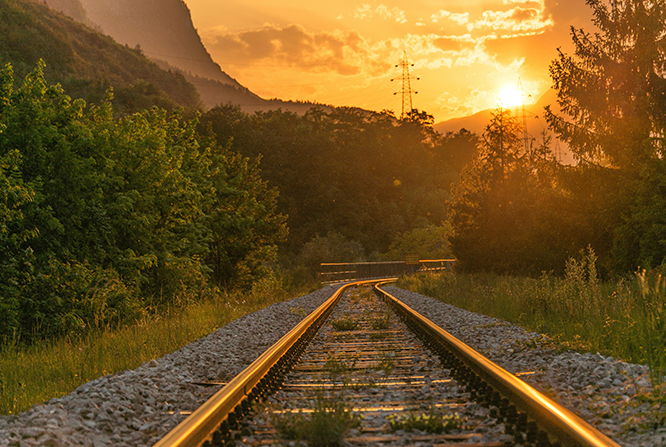In the hustle and bustle of our daily lives, it’s easy to overlook the dangers lurking in seemingly mundane places. One such place, often underestimated and disregarded, is the railroad track. While trains are an essential part of our transportation infrastructure, they also pose significant risks if not approached with caution and respect. In this article, we’ll delve into the perils of playing or walking too close to train tracks and emphasize the critical importance of railroad safety.
The Allure of the Tracks: A Dangerous Temptation
Train tracks have a magnetic allure for some, especially children and teenagers. The rhythmic clatter of wheels on rails, the vast expanse stretching into the distance, and the thrill of being close to something as massive as a train can be enticing. However, this allure often masks the real danger lurking beneath the surface.
The Grim Statistics: Reality Check
According to the Federal Railroad Administration, hundreds of people are killed or injured each year in incidents involving trains. Many of these incidents occur when individuals trespass on railroad property or attempt to cross tracks illegally. The consequences can be devastating, not only for the victims but also for their families and communities.
Understanding the Risks: Why Train Tracks Are Not Playground Material
Train tracks may appear innocuous, but they are designed for one purpose: to facilitate the safe passage of trains. Trains, with their immense size and weight, require significant distance to come to a complete stop. Unlike cars, they cannot swerve to avoid obstacles or stop on a dime. This means that if a train engineer spots someone on the tracks, it’s often too late to prevent a collision.
Furthermore, the area surrounding train tracks is not designed for pedestrian traffic. Loose gravel, uneven terrain, and limited visibility can make it difficult to hear or see an approaching train until it’s dangerously close. Even if a person spots a train in the distance, they may underestimate its speed and overestimate their ability to get out of harm’s way in time.
The Ripple Effect: Beyond the Immediate Danger
The repercussions of disregarding railroad safety extend far beyond the individuals directly involved in an incident. Train engineers and conductors are often traumatized by collisions, even if they are not at fault. Emergency responders face the grim task of dealing with the aftermath, and communities are left mourning the loss of life and grappling with the emotional fallout.
Moreover, train delays resulting from accidents can have widespread economic implications, affecting industries that rely on timely transportation of goods and services. The financial cost of these delays, coupled with the human toll, underscores the urgency of prioritizing railroad safety.
Empowering Communities: Education and Awareness
Preventing railroad accidents requires a multi-faceted approach that combines education, enforcement, and infrastructure improvements. Schools, community organizations, and law enforcement agencies all play a crucial role in raising awareness about the dangers of trespassing on railroad property and the importance of obeying warning signals at railroad crossings.
Additionally, investing in safety upgrades such as improved signage, fencing, and pedestrian crossings can help mitigate risks and create safer environments for both pedestrians and train operators. By working together, we can create a culture of railroad safety that prioritizes human life above all else.
Conclusion: Safety First, Always
As we navigate the complexities of modern life, it’s easy to overlook the simple yet profound importance of staying safe near train tracks. Whether you’re a parent teaching your children about railroad safety or a commuter rushing to catch the next train, remember that a moment of carelessness can have irreversible consequences.
Let’s honor the lives lost to railroad accidents by committing to greater vigilance and respect for railroad safety protocols. By doing so, we can ensure that train tracks remain pathways to progress rather than corridors of tragedy. Stay safe, stay vigilant, and always prioritize safety, wherever your journey may take you.
